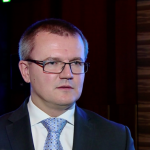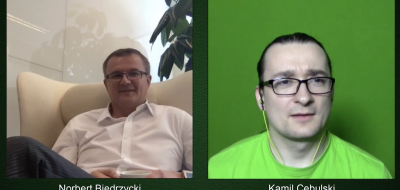An interview for Gazeta Warszawska/ Newseria
In Poland there are nearly 1150 „white spots” – areas deprived from internet access or places where the speed of connection is below 10 Mb/s. As Norbert Biedrzycki from Atos Poland explains, the problem with internet access in Poland is a result of geographical factors. In less reachable places laying the fiber is either technically impossible or unprofitable. The most significant barrier is the level of administrative fees as the one for laying the cable within the lane.
The problem with an access to high speed internet in Poland is a result of structural and territorial deployment of the country. Of course we have fibers in the cities, but in the countrysides or in less reachable regions, like mountains for example, their distribution is significantly smaller – says to the news agency Newseria Inwestor. Norbert Biedrzycki – CEO of Atos Poland.
At the beginning of the year the Office for Electronic Communication published report showing that in Poland there are nearly 1150 so called “white spots” – areas with no internet access or where its speed of connection is below 10 Mb/s.
– The second issue is a business aspect. Telecom companies have to earn on it. It doesn’t mean they will lay fiber in any place no matter how profitable such investment will be. There must be a business in it for them, as this is how their work is evaluated. President of Atos Poland draws attention to the third barrier, which are technological limitations. Nowadays the most advanced access platforms are created on fiber basis. The problem, however, are high costs of such an investment.
– it is not only the mattter of laying cable in the ground, but also road charges per kilometer. They are several thousand zloty high per year, therefore the maintenance of this network is extremely high. – he says.
The expert explains, that for the degree of saturation of internet network the legal regulations are responsible. As an example he mentions Romania, which for many years was in the end of rankings when it comes to coverage and the speed of connection offered to individual customers. The situation changed when the local government allowed free competition between companies.
– Release of the market, admission of different telecom operators and natural competition. As a result the companies had to reduce costs, come to agreement with specific territorial units in order to make these costs bearable for the end user. – explains Norbert Biedrzycki.
In his opinion, Polish companies have a lot of opporrtunities to improve the quality of the services offered, however the fight for the customer is run in too conservative manner.
– At the end of the day it is end user, which actually means the customer, who pays our salaries. This is why the better offer he receives and the better access he gets, he will be willing to pay more – he concludes.
The expert notes the fact, that in places where laying fibers is impossible due to economic reasons, the wireless internet technology can come in use.
According to UKE (Office for Electronic Communication), the companies, which in last year’s LTE frequency auction won bid for individual bands, have from 12 to 36 months to submit reservations to start their bands’ use. Investment commitments concern not only “white spots”, but also places where the access is limited. In total there are nearly 2300 municipalities.
Link to the article (in Polish)







